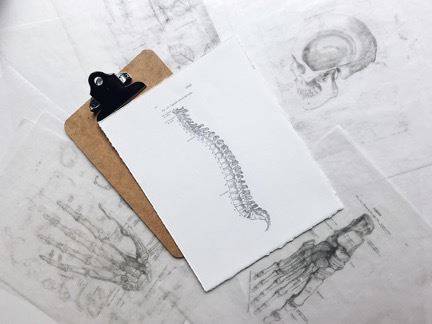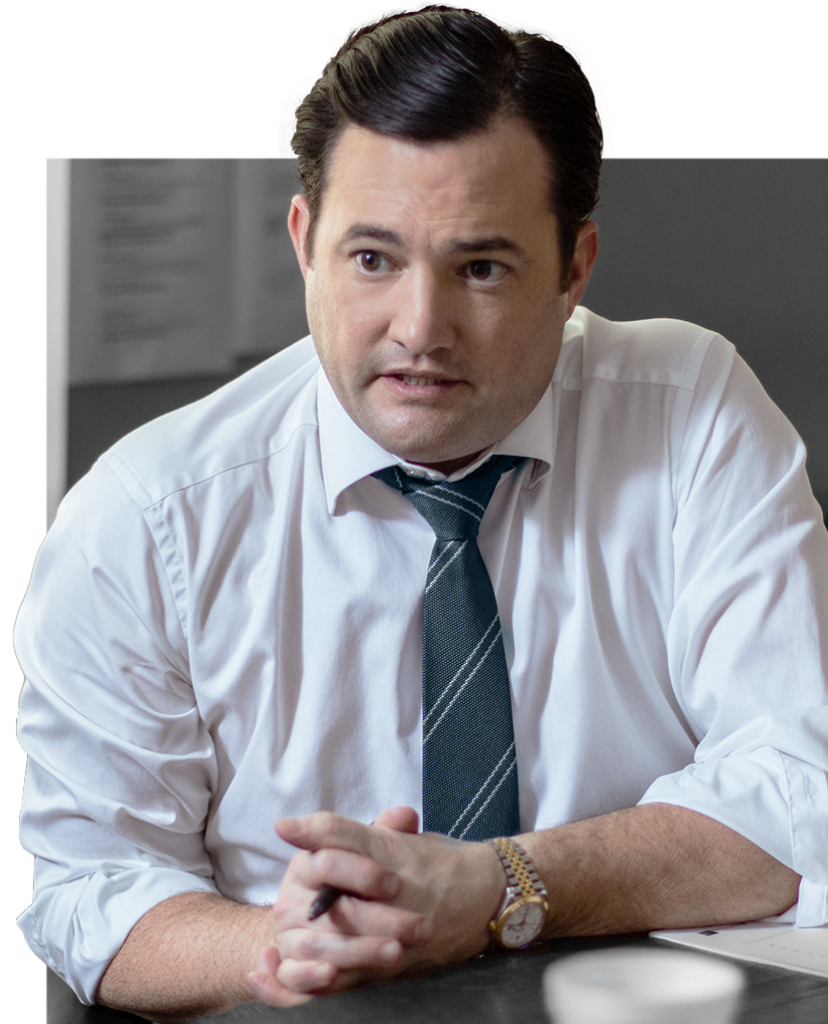Lower back pain is a common problem in America today. It can be a result of being overweight, lack of exercise, and low-speed car accidents. Most of the time, the pain is due to the vertebrae of the lower spine compressing discs in the lumbar region, but occasionally the problem is lower down, in a bundle of nerves called the cauda equina. This rare but serious disorder can lead to a lifetime of disability for patients if it is not caught and treated in time.
Cauda equina syndrome was first recognized in 1934. It is estimated that 2% to 6% of lumbar disk herniations lead directly to cauda equina syndrome. All other causes, such as hematomas, fractures, or tumors, will cause the syndrome directly, but disk herniation creates the disorder as a secondary effect.
Cauda Equina Syndrome: What it is and Where it is
The spinal cord is a long, tough column of tissue extending from the base of the brain to the middle of the lower back. At about waist level, it separates into many strands, called the “cauda equina” or “horse’s tail” from its appearance in x-rays and CT scans. The cauda equina is actually a continuation of the spinal cord, and these long thick nerves continue down into the lower abdomen, buttocks, and legs.
Causes of Cauda Equina Syndrome
Cauda equina syndrome (CES) is caused by pressure on the nerve bundle. Any condition which narrows the spinal canal, such as arthritis or bone spurs, can contribute to CES, as can bulging or inflamed cartilage or impingement of soft tissue around the spinal cord. CES usually develops over time, but a single acute injury or strain may herniate the disc to the point of causing CES. Potential causes can include:
- Spinal lesions, tumors, and infections
- Traumatic injuries such as gunshots or vehicle accidents
- Spinal hemorrhages
- Postoperative complications
- Spinal anesthesia or lumbar punctures
- Lumbar spinal stenosis
- Birth abnormalities
The key to identifying and treating CES is recognizing the symptoms as soon as they present. There is a very narrow window for doctors to see and correct the nerve compression that causes CES.
Symptoms of Cauda Equina Syndrome
The symptoms that accompany CES depend on exactly which nerves are being compressed by the hernia, and how severe the swelling has become. They may not all occur, and communication between patients, doctors, and other caregivers is essential for accurate diagnoses.
CES involves pressure on the nerves that stimulate the lower abdomen and legs. Symptoms of the pressure include loss of sensation and loss of movement in that region, including:
- Urinary retention and incontinence. The person loses the sensation of a full bladder, and either does not urinate or eventually loses control of their bladder. Fecal incontinence may also occur.
- Saddle anesthesia, defined as numbness or tingling across the genital and thigh area
- Pain, numbness, or tingling in the lower back and legs
- Sexual dysfunction
- Foot drop and leg weakness
Other conditions have similar symptoms, including sciatica, peripheral nerve disorder, spinal cord compression, and lumbosacral plexopathy, a condition where the nerves are compressed as they travel through the pelvis.
Most experts consider the red flag marker of CES to be urinary retention. If that exists, particularly if there is sudden onset in a patient with no previous history of the condition, doctors must consider a diagnosis of CES. Once a diagnosis has been made, surgery is the best treatment of choice and needs to be carried out within 48 hours of the onset of symptoms.
Negligence and CES
Although some patients with CES first report their symptoms to their own doctors or to specialists like neurosurgeons or orthopedists, most people go to the emergency room for their diagnosis. This puts the burden of recognizing and diagnosing CES on emergency room personnel.
Communication between the patient and their family, emergency department staff, and the ER doctors and subsequent medical providers is essential to recognize the condition and undertake swift treatment before it is too late. Possible negligent acts or omissions by the ER staff can include:
- Failure to document the presenting symptoms or to appreciate their seriousness (“I suddenly can’t go to the bathroom.”)
- Failure to obtain a complete physical history of the patient, or to make an accurate timeline (“I fell off a ladder at work last week and now suddenly I’m wetting my pants.”)
- Failing to conduct a complete physical, including a rectal exam, when the symptoms warrant it
- Failing to request CT scans, MRIs, or other imaging, consultation, or referrals once CES is suspected or diagnosed
- Delaying treatment or referring the patient for outside tests or additional studies once CES is suspected or diagnosed
CES is a true medical emergency. If surgery is not performed immediately to relieve the pressure on the affected nerves, the long-term recovery prognosis is poor.
Treatment of CES
CES is treated by lumbar disc surgery to relieve the swelling and pressure on the affected nerve or nerves. After surgery, patients may require rehabilitation to recover motor skills. Sensory ability may slowly return in the affected area. Patients may need pain management during the healing process.
Bladder function is slowest to recover. Chronic incontinence is the main problem with CES, even after surgery. A need for self-catheterization can lead to frequent urinary tract infections and scarring of the urethra. Patients may also lose sexual function, especially in the period immediately after surgery.
CES is a neurogenic disorder, and neuropathy is common after surgery. Neuropathy is caused when damaged nerves regain partial function; it results in pain, tingling, and burning or itching feeling in the affected areas. It may be accompanied by numbness and weakness in the affected area as well.
CES can become disabling, particularly if it is not caught and treated early. The longer the delay in surgical intervention, the worse the nerve damage, and the less likely the patient is to have a good recovery. Most patients with CES will not return to work, because of the pain and the social impact of chronic incontinence and neuropathy.
Legal Implications of CES
Cauda equina syndrome may have multiple actual and proximate causes. If you believe you have this condition and it was caused by medical malpractice, you should consult a medical malpractice attorney immediately. However, if the cause is a herniated or ruptured disc, there may be other causes for your injury that you should examine. It is important you describe your entire injury to your attorney, not just the medical diagnosis and treatment.
Failure To Diagnose
The primary breach of duty in a CES malpractice case is the failure to diagnose CES in a timely manner. CES is an emergency that requires emergency diagnosis and emergency treatment. Doctors and malpractice attorneys recommend that any patient presenting with urinary dysfunction be treated as an emergency and CES considered until it is ruled out by MRI or other scans.
Failure To Obtain a History
Other conditions can mimic CES and vice versa. ER staff should take a complete medical history and include all of the patient’s past illnesses and injuries. A patient who fell from a ladder at work a week ago, even if they were not injured then, may have suffered a herniated disc that is now presenting as CES. Failing to note that on the chart can become part of the malpractice suit later.
Delaying Treatment
We have all gone to the emergency room and been told “go see your family doctor in a few days.” Unfortunately, in the case of a condition like CES, “a few days” can be the difference between recovery and not walking again. Acute CES must be treated as an emergency.
Doctors may not recognize that your condition is CES, or they may want to wait until you can be seen by a specialist or by an “in-network” physician. None of these things apply in an emergency. You must receive immediate emergency care. If you suffered CES due to being sent off to “see your own physician,” let your attorney know at once.
Suing for Medical Malpractice in CES
Medical malpractice laws vary from state to state, but in general they require a showing of a failure to adhere to the standards of practice expected of a medical professional in similar conditions and circumstances. In other words, would another doctor, seeing your symptoms, have recognized cauda equina syndrome, and have done anything differently?
Documentation and Witnesses
The first part of your case will be gathering the documents and medical reports about your case. Your attorney will need everything, even if it doesn’t seem related. CES can develop over time, or it can be caused by a sudden injury, so any medical conditions that may have built up over time are important, especially if you went to the doctor for a sudden change in your bathroom habits which the doctor did not notice. It’s also important to know if:
- You regularly lift heavy items at work or at home
- You have had previous herniated discs
- You are or have been overweight
- You have spinal arthritis
- You have had a lumbar puncture
These things can predispose you to CES, and a doctor should recognize this when assessing you for the condition.
Expert Testimony
Your attorney will most likely need the services of an expert, that is, another doctor of similar training and experience, who will review your case and determine if they would have ordered similar tests or surgery under the same conditions.
For instance, if you fell from a ladder at work last week, the expert will look at the medical report to see if you had a CT scan during your examination. They will check to see if there are any differences in any scans you received during this visit. Did you report any pain during the first visit that was present during the second?
Expert testimony is critical to establishing that a reasonable doctor, under the same circumstances, would have known that you should have been diagnosed with CES and immediately sent for surgery to relieve the pressure in your spine.
Future Considerations
When bringing your case to negotiations or court, your attorney will present some facts about what happens in a case of undiagnosed CES. Cauda equina syndrome can become a disabling condition, and you may need rehabilitation, repeated surgeries, and eventually long-term care. You are entitled to compensation for these future costs, including:
- Foot, leg, and back pain and weakness, requiring supportive devices
- Bowel and bladder incontinence
- Infection and scarring from catheters, requiring corrective surgery
- Pain and suffering due to loss of work, social humiliation, and loss of function
- Sexual dysfunction
- Loss of consortium
- Addiction issues due to pain management dependency
In addition, you are entitled to the same economic and non-economic damages you would be entitled to receive in any medical malpractice suit, including lost wages, medical costs, and punitive damages if allowed by your jurisdiction.
CES and Personal Injury Claims
CES may be secondary to other types of personal injury cases as well. If the initial cause of the back injury was a workplace injury, an auto accident, or a slip and fall, you could be looking at multiple parties responsible for your injury and pain and suffering. Just because the doctor failed to diagnose what was causing your urinary incontinence does not relieve the drunk driver who rear-ended you at the stoplight from their responsibility.
Medical malpractice and personal injury claims are separate types of legal cases, and they often have their own statutes of limitation and rules for filing. Your time for filing a personal injury claim may start from the date of the injury, or it may start from the date you discovered you were injured.
For these reasons, before you set out to file an insurance claim or try to sue your doctor, you need the services of a medical malpractice attorney who understands what you’re going through. In Texas and Louisiana, if you believe you were misdiagnosed and suffered cauda equina syndrome, contact Morris & Dewett Injury Law at (318) 221-1508 for a free consultation.









